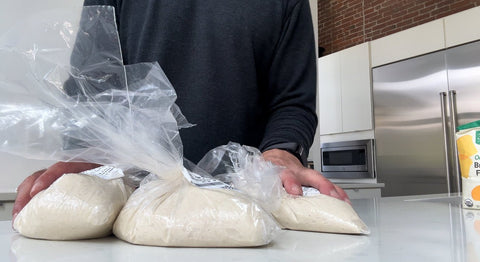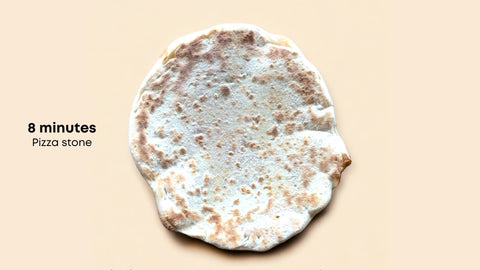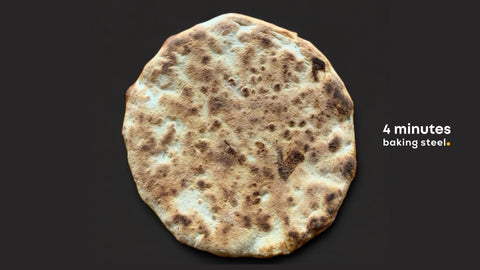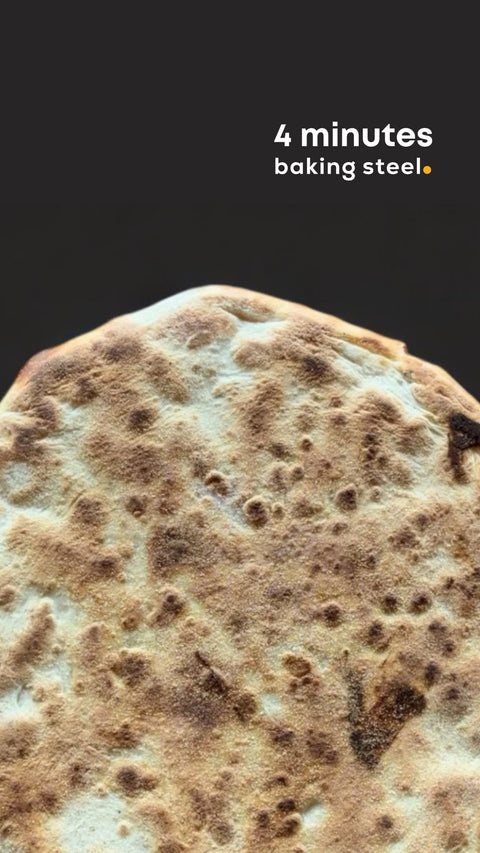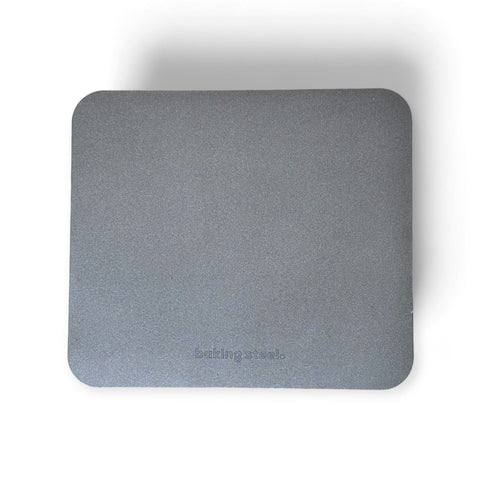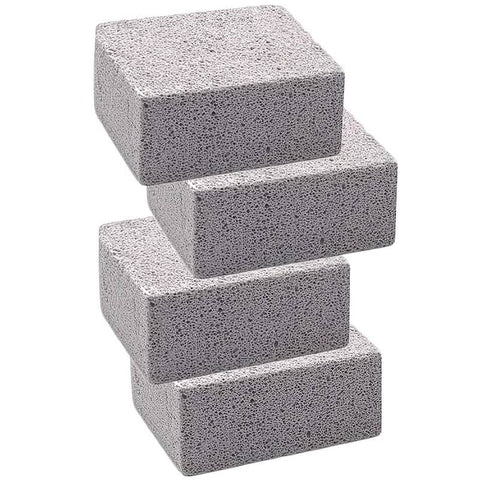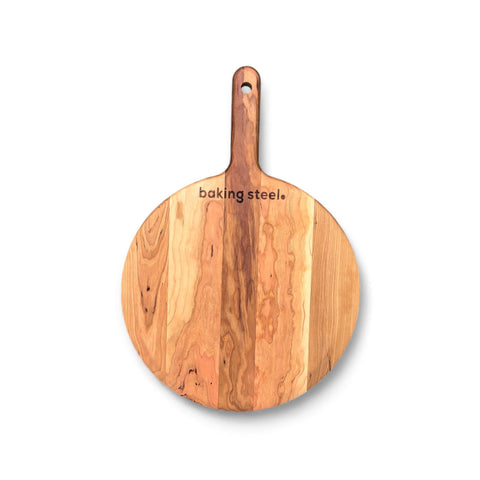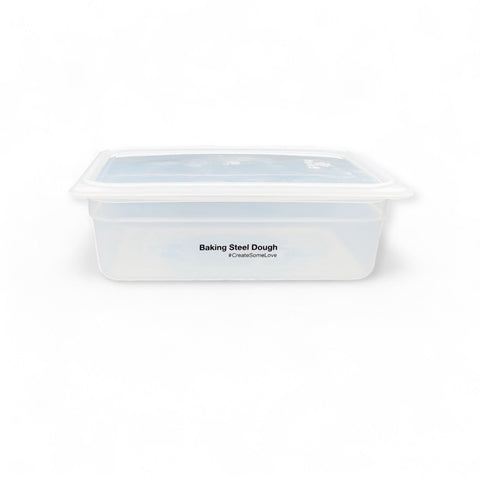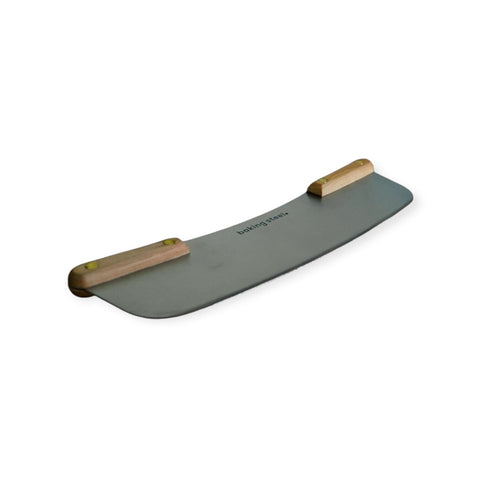If your dough keeps snapping back, it’s not you, it’s the dough. The fix is simple: ball it, let it rest, then stretch. Here’s the pro method.
Watch: the fast fix for elastic, “snaps-back” dough.
The One Big Reason Dough Fights You
Store-bought dough is portioned and proofed for transport, not for stretching. If you try to shape and try and make pizza straight from the bag, the gluten is tight and it snaps back.
- Ball it: Fold and tuck to create surface tension.
- Rest it: Covered, lightly oiled, ~3 hours at room temp.
- Then stretch: Gravity + patience = easy shaping.
Our Gold-Standard: 72-Hour Dough
Store-bought dough works in a pinch, but when you have time, our slow-fermented 72-Hour Dough is the move. Longer fermentation means deeper flavor, better browning, and that light, open crumb you crave.
72-Hour Dough (recommended)
- Complex flavor + lighter texture
- Beautiful blistering & browning
- Flexible schedule (cold ferment)
Store-Bought Dough (in a pinch)
- Fast, convenient start
- Great if you handle it right
- Perfect for weeknights
Below: how to handle it like a pro.
Step 1: Portion & Ball the Dough
Most store-bought dough comes in 1 lb (454 g) bags. Divide it into two pieces—each about ½ lb (227 g)—for an easy 10–12″ pie. Lightly flour your hands and the counter. Fold the dough edges toward the center and rotate as you go to build surface tension. Pinch the seam closed.

“If you need a little flour, sprinkle it lightly. That’s it.” — Andris
Step 2: Rest (The Magic Window)
Place each dough ball in a lightly oiled container, cover, and rest for ~3 hours at room temperature. This is the game changer, gluten relaxes, dough becomes extensible, and shaping gets effortless.
- Gluten relaxation: no more snap-back when you stretch.
- Better extensibility: even, tear-free shaping.
- Improved texture: lighter, airier crumb after the bake.


Need a refresher on balling? Here’s the quick guide →
Step 3: Heat Is Everything
For pizzeria-quality crust at home, you need a heat reserve. A Baking Steel stores and transfers heat ~20× better than stone, so you get fast oven spring and crisp, even browning.
“Preheat the oven to 500°F with your steel on the top rack for at least 45 minutes.” — Andris

Step 4: Stretch with Patience
Generously flour the counter. Press the dough into a small round. Pick it up and let gravity help—rotate like a steering wheel. If it resists, set it down for 60 seconds and let the gluten relax.
“Knuckles tucked, gentle turns, no rushing.” — Andris
Step 5: Top Lightly, Then Bake
Less is more. Two spoonfuls of sauce, then cheese and toppings with restraint. Dust your wooden peel with flour + semolina, ball bearings for a smooth launch.
- Launch onto the hot steel.
- At ~2 minutes, rotate 180°.
- Finish until the crust is blistered and golden (usually 4–6 minutes total, oven-dependent).
“Always set a timer. Two minutes disappear faster than you think.” — Andris
Finish Strong
Admire the underside for even color. Slice, serve, and finish with a drizzle of olive oil or a few basil leaves. Simple moves, big smiles.

Ready to make your best pizza yet?
Start with the right foundation: Baking Steel →
FAQs
Do I need to let store-bought dough rise?
Yes—after you ball it. Rest it ~3 hours at room temp so gluten relaxes and shaping becomes easy.
My dough keeps snapping back. What should I do?
Pause. Set it down for 60–90 seconds. Let the gluten relax, then continue. If it still fights you, it needs more rest time.
Stone vs steel—why does steel work better?
Steel stores and transfers heat far more efficiently, delivering fast oven spring and crisp, even browning—like a deck oven.
What size should I portion store-bought dough?
For 10–12″ pies, split a 1 lb (454 g) bag into two ½ lb (227 g) balls.
